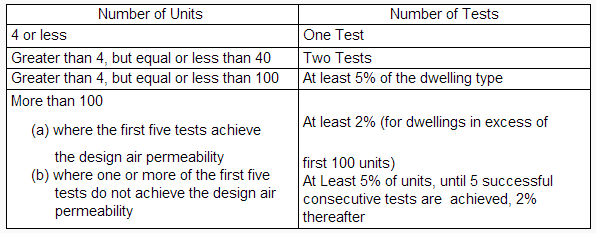Air Tightness Testing
SC Air Tightness & Ventilation have been air testing buildings since 2007. This was ever since the Building Regulations stipulated that all new buildings are required to achieve a certain level of air tightness.
We undertake testing at a residential and commercial scale and are fully trained and qualified to carry out testing in accordance with the IS EN 13829:2000 standard. We are now accredited by National Standards Authority of Ireland (NSAI) to carry out Air Tightness Testing.
What is Air Tightness Testing?
This is the measurement of the flow of air within a building. It helps to identify unwanted and uncontrolled air leakage through gaps and cracks within the building fabric. Air Tightness Testing is also known as Air Permeability Testing or Air Leakage Testing.
Why is air tightness important?
Reducing air leakage and improving the air tightness of a building, reduces heating bills and saves you money. This does not mean therefore that there will be a lack of fresh air entering the building; it just means that the flow of air becomes controlled. The aim is to "Build Tight, Ventilate Right''
What test result is required to comply with the Building Regulations?
In Part L of the Building Regulations it requires that a performance level of less than 7m³/m²/hr @50Pa for air permeability must be achieved. If the performance level of a tested dwelling is greater than 7m³/m²/hr @50Pa, then remedial action should be taken and the dwelling re-tested until required performance level is achieved.
How is Air Tightness Testing carried out?
The intended ventilation openings are closed (windows / wall vents) and any extractor fans and chimneys are sealed.
The operation of the blower door then creates a pressure difference between the inside and the atmospheric of the outside, which in turn forces air out of the building. This is known as the depressurisation method.
The air flow of the fan is measured at a range of pressures which calculates the air flow rate m³/m²/hr @50Pa. The data is analysed by software which is linked to a laptop which formulates the result.
Is Air Tightness Testing required on every new dwelling?
Air Tightness Testing is to be carried on a proportion of dwellings on all development sites. The guidelines are based on each dwelling type. In the case where a number of apartment blocks are on the same site, each block should be treated as a separate development.
What are common air leakage problems?
![]() Waste/service pipes penetrating the external walls
Waste/service pipes penetrating the external walls
![]() Fittings and service penetrations in ceilings.
Fittings and service penetrations in ceilings.
![]() Poorly fitted windows and doors.
Poorly fitted windows and doors.
![]() Poor draught stripping to doors, windows and attic hatches.
Poor draught stripping to doors, windows and attic hatches.
![]() Damaged vapour control layers.
Damaged vapour control layers.
![]() Gaps in mortar joints
Gaps in mortar joints
![]() Joists and slabs built into external walls.
Joists and slabs built into external walls.
![]() Open chimneys without dampers.
Open chimneys without dampers.
![]() Gaps at floor/external wall junction and wall and roof junction.
Gaps at floor/external wall junction and wall and roof junction.
![]() Some of these typical examples are shown below by thermal images.
Some of these typical examples are shown below by thermal images.





